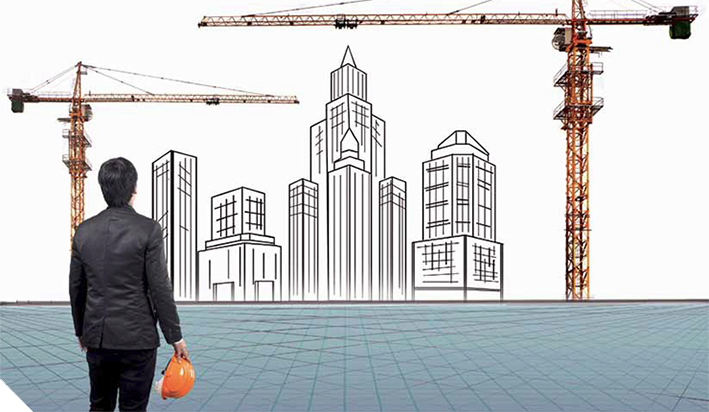 How to win the e-retail race - Focus on the challenges in the fulfilment
How to win the e-retail race - Focus on the challenges in the fulfilment
In the last article in this series, we touched upon the gains made by the e-retail industry in comparison to the modern trade in India. Modern trade, which is currently between 8 – 10 per cent of the total retail trade in India, has taken about 20 years to grow to this volume. In contrast, e-retail has grown rapidly to about 2 percent of the total retail trade in a relatively short time of about 7-8 years.
In the last article, we looked at how the retailer can win and retain customer loyalty in today’s environment. The second dimension that is significant in facilitating the growth of e-retail is the ability of the firms to sustain their delivery against customer expectations.

Fickle shoppers – How do they impact fulfilment?
In the last article, we referred to a study of online shopper behaviour conducted by Nielsen. The survey showed that the top three reasons for a person buying online in India are: advertising, peer influence and recommendations. The other, and less significant, reasons include attractive discounts, convenience and access to a full range.
Given that there is a large majority of shoppers who are still unfamiliar with the online shopping experience, this is understandable. However, given the fact that the online retail industry is expected to grow at a rate averaging above 30 percent year-on-year, it is important for you to reorient and ensure that the growth is sustained through systematic changes in customer order fulfilment and delivery. It is quite likely that the days of a customer shopping on the basis of recommendations from her friends will give way to her relying more on her own experience in getting what she wants.
In an online survey conducted by Harris Interactive in 2011 on online shopper behaviour in the US, it was found that 89 percent of shoppers stopped buying from online stores after they experienced poor customer service. Another survey by Bain & Co. reveals that the customer is four times more likely to go to your competitor if your problem is service-related rather than price or product-related.
Convenience, access, variety, price, peer influence can only take you this far. The customer value created through effective product and/or service delivery would be the parameter that separates the e-retailers who corner market share from those that don’t.
E-retail – Physical to digital infrastructure
The traditional retail businesses rarely, if ever, get in touch with the customer. Even when a direct customer interaction does happen, it is more around issues that the customer has in using the product that she has purchased from the retail store. Customer preferences are ascertained through focus groups, social media interactions, store surveys, campaigns, advertising responses etc.There is always a level of uncertainty about this information – the question is one of degree. While there is the physical infrastructure delivering key parameters of geographical proximity and convenience, individual customer preferences are not accurately known.
 On the other hand, the e-retail industry lives in the information world. Every individual customer and her buying behaviour is known every time she visits the e-retail website. The move from the physical to the digital infrastructure offers distinct advantages in terms of customer access, information, scale and convenience. Indeed, in many cases, there is more data than what the e-retail organisation knows what to do with! As in all such cases, there are challenges in the fulfilment.
On the other hand, the e-retail industry lives in the information world. Every individual customer and her buying behaviour is known every time she visits the e-retail website. The move from the physical to the digital infrastructure offers distinct advantages in terms of customer access, information, scale and convenience. Indeed, in many cases, there is more data than what the e-retail organisation knows what to do with! As in all such cases, there are challenges in the fulfilment.
A geographically distributed base of customers demanding immediate fulfi lment requires coordination across order planning, warehouse & logistics management and finance processes. Accuracy of order fulfilment in a business scenario that demands response time in hours is a herculean task. The coordination required is intricate, across geographical boundaries and needs consistent information flows across the physical supply chain. Here’s where the traditional retail has signifi cant advantages over e-retail. They have it all mapped out over the last couple of decades!
The question in front of e-retail is how can better knowledge of the customer be used to deliver great customer satisfaction?
Fulfilment: Promise vs Reality
 The fundamental difference between the traditional retail businesses (including modern retail) and the e-retail businesses is the volumes involved in shipment. Brick-and-mortar retail has expanded using ‘push’ models of inventory deployment that reduces the logistics costs per unit dramatically. On the other hand, e-retail firms have seeded the ideas of ‘flexibility’ and ‘choice’ resulting in customer expectations around responsiveness. She will expect a single item to be delivered within the same time window as a basket of goods – costs of shipment is not her concern.
The fundamental difference between the traditional retail businesses (including modern retail) and the e-retail businesses is the volumes involved in shipment. Brick-and-mortar retail has expanded using ‘push’ models of inventory deployment that reduces the logistics costs per unit dramatically. On the other hand, e-retail firms have seeded the ideas of ‘flexibility’ and ‘choice’ resulting in customer expectations around responsiveness. She will expect a single item to be delivered within the same time window as a basket of goods – costs of shipment is not her concern.
The recent trends in e-retail have encouraged and indeed strengthened these expectations of performance. In chasing Gross Market Value, e-retailers have gone too far? What needs to be done to inject a dose of reality in fulfi lment?
For starters, charge the customer for shorter delivery times and move the delivery promise into a 3-5 day window. Manage the inventory holding – response time trade-off by expanding the network selectively. Use last mile delivery as a differentiator to boost sales and drive customer loyalty. Create industry networks and partnerships to ensure that there is no overstocking of inventory while shortening delivery cycles to the customer. Drive specialisation in the fulfilment of categories within and outside the organisation. And so on.
E-Fulfilment – Is it the answer?
Enter the e-fulfilment service function.
The services delivered by this function to an e-retailer is essentially the same – identify the product that needs to be delivered to the customer, plan & source the product, plan the logistics, manage the warehouse, and create last mile delivery options.
Technology forms the common thread across these functions. E-retailers who deploy effective technology platforms rapidly stand to gain customer loyalty and better revenues in the longer run. Technology integrated with the parcels is the direction of the future – the parcel speaks for itself as it traverses the logistics chain. Where did this parcel get sourced from? Who handled it? How many time? Where was it stored? Where is it headed? What is its condition?
Mobile and Cloud technology enables these questions to be answered quickly, accurately and consistently. It is exciting times ahead with the “Internet of Th ings” taking root in various logistics related operations. Establishing a physical infrastructure that recognises the nature of each parcel transiting through the network is a time consuming and oftentimes expensive process. Given the direction of the e-retail industry and the maturing customer demands, it would be the appropriate area to invest in.
Combined with the data that the e-retailer generates at the time of the customer order, the parcel can be moved through the chain with greater efficiencies than before. The ideal scenario would be to get the product to the customer in a time window comparable to offline retail, but that comes attached with unsustainable levels of cost.
Help yourself to help your customer
With technology playing an increasingly larger role in the fulfilment function, driving differentiation will need to be a consistent, everyday pursuit. Invest in the technology that meets the industry requirements, rigorously drive SLAs within and outside your organisation, establish a reputation for reliability and consistency. Set up the differentiated positioning before technology drives everything to a standard.
Given that there is a volume of information available about your existing customers, it would be ideal to start with them. Understand how they want their orders fulfilled, when are they happy and what does it take to delight them? How would you want to handle returns? When a regular customer does not get an order within the specified time window, it is likely that their satisfaction levels have dipped and they slow down on the recommendations. A newer customer – while spending far lesser, is likely to be more forgiving. An offer every now and then around volumes transacted would keep the wheels moving nicely. Everyone likes a good deal!
We live in a world where consistent fulfilment is an expectation – it is a “hygiene” factor. Differentiated fulfilment through technology can help drive better customer delight and longer term loyalty.
It is best done incrementally, but in quick iterations. Small changes done rapidly are easier to absorb, both by customers and by your own staff . This would be an easier, less risky way to using technology to building a barrier to exit.
The writer is Managing Principal, CGN Global



.png?width=203&name=CGN_Tagline1%20(1).png)